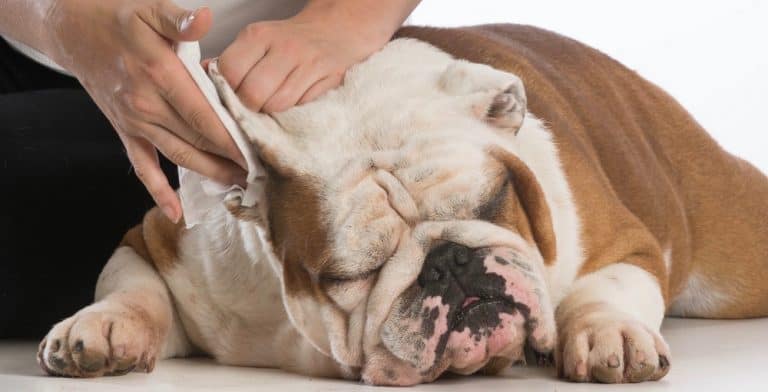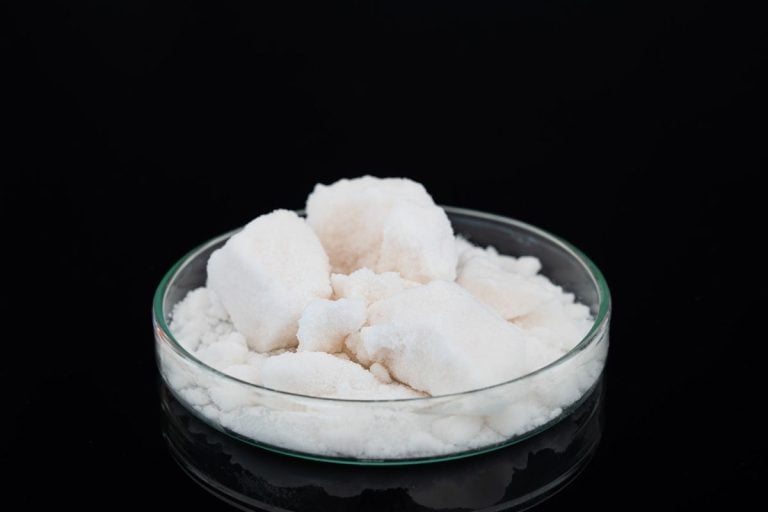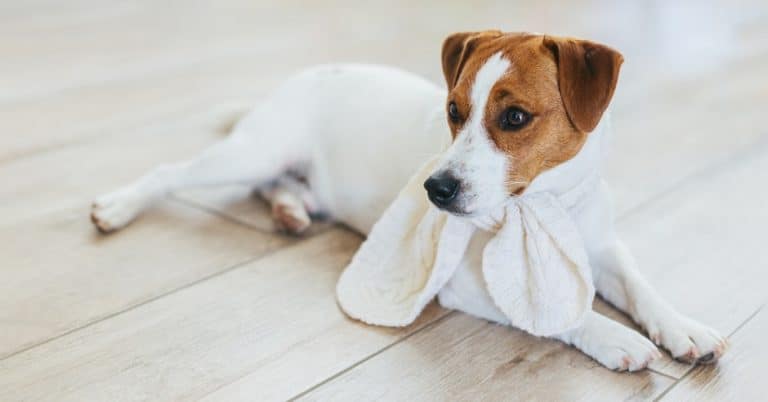Parvo – The Virus In Stages
Parvovirus is a highly contagious virus that can cause significant difficulties and even death in your dog or puppy.
However, for owners who provide their dog with excellent care and quick medical intervention, the survival percentage of parvo is high.
In this article, we will talk more about what parvo and the different stages of it all the way from infection to recovery.
What Is Parvo?
Parvo in puppies and dogs is caused by the canine parvorirus. This virus is very infectious and spreads by contact with an infected dog or contaminated material.
Every time your puppy licks, sniffs, or consumes contaminated excrement, he is exposed to the parvovirus.
When a person who has been exposed recently to an infected dog has physical contact with your puppy, or when a puppy comes into contact with a contaminated object, such as a food or water dish, collars and leashes, or the hands and clothing of persons who handle sick dogs, indirect transmission occurs.
That is why it is critical to apply a parvo disinfectant.
What Dogs Are Most At Risk Of Parvo?
Puppies that are most vulnerable to parvo are usually aged between six weeks and six months. Dogs less than six weeks old keep some of the antibodies from their mother, providing the dog receives the full round of vaccines against parvo.
Puppies are immunized against parvovirus at six, eight, and 12 weeks of age.
They are susceptible to the disease until they get all three doses in their immunization regimen, therefore parents must exercise particular vigilance during this period to keep their puppies from acquiring the virus.
For enough protection, puppies are heavily advised to get a dose of the parvo vaccination between 14 and 16 weeks of age, regardless of how many doses they got previously.
The Stages Of Parvo
Infection
Viral particles are introduced to the puppy by fecal material from an infected dog. These particles can originate from a variety of sources, including the mother dog, the surroundings, or inanimate items like clothes.
Only a minimal amount of fecal material is required to induce infection, which enters the puppy or dog’s mouth.
Incubation
There is an incubation phase (three to seven days) during which the dog is infected but not displaying symptoms.
During this time, the virus particularly seeks out the fastest dividing cells in the body, generally beginning with the tonsils or lymph nodes in the throat.
The virus is able to proliferate swiftly and efficiently by attacking these fast dividing cells, allowing it to enter other sections of the dog’s system.
The virus will look for other sources of quickly dividing cells after it has expanded and reached the circulation.
Parvovirus can infect the heart in tiny puppies, causing inflammation of the heart muscle, problems with heart function, and arrhythmias.
Symptoms Begin
When parvo enters the bone marrow, it targets the young immune cells, resulting in a decrease in the number of white blood cells, which then lowers the body’s ability to protect itself.
This makes it easier for the virus to infiltrate the gastrointestinal (GI) tract. This is where the most harm occurs.
The virus targets the small intestinal lining, preventing the dog’s GI system from absorbing nutrients and preventing fluid loss into the stool.
The symptoms that usually start to appear during this stage include:
Diarrhea
Diarrhea is one of the most prevalent symptoms of parvo in dogs. Loose or irregular feces can be caused by a variety of circumstances, including dietary changes or allergies, but it is especially concerning in puppies.
Diarrhea in unvaccinated pups or adult dogs may indicate that they have been infected with parvovirus.
Lethargy
Parvovirus can also cause your dog’s energy to drop, and lethargy can be a sign. If your typically lively and active puppy suddenly seems less engaged than usual, this might be an indication of an underlying health problem.
While it is natural for your dog to take a lengthy nap after some strenuous playtime, if your dog begins to show indications of a major decline in energy, you should always discuss the changes in behavior to your veterinarian.
Lethargy in dogs manifests as a sluggish responses, acting out of character, a lack of enthusiasm in things they would ordinarily like (such as going for a walk), and grogginess.
Fever
Another typical symptom of parvovirus is fever. The body responds to many ailments by raising its internal temperature.
Dogs have a higher body temperature than humans, with an average temperature ranging between 99.5 to 102.5F, thus anything beyond that range is most certainly a fever.
If your dog has a fever, he or she may exhibit symptoms such as red eyes, decreased energy, a dry nose, heated ears, coughing, and shivering, similar to people.
If your dog exhibits some of the mentioned symptoms and you suspect a fever, you can always use a pet thermometer to check their temperature at home.
When your dog gets a fever, his immune system is attempting to combat the infection by raising his body temperature, making it more difficult for the virus to survive.
So, if you’ve decided that your puppy has a fever, it’s always a good idea to take them to the vet to be evaluated for diseases and viruses like parvovirus.
Weight Loss
If you observe a decline in your puppy’s diet or if they don’t appear interested in eating at all, this is always cause for concern. Dogs require a lot of nutrition, especially developing pups, and not eating can result in considerable weight loss or anorexia.
Parvovirus affects the gastrointestinal tract, making it harder for the dog to eat and keep food down, but there might be many other issues for your pup not to eat, so see your vet if you are worried.
Vomiting
In dogs, vomiting, like diarrhea, can be an indication of parvo. Some dogs’ stomachs are particularly sensitive, but vomiting in conjunction with some of the other symptoms might suggest a parvo infection.
There might be a variety of causes for your dog’s vomiting, but it’s always wise to be cautious and rule out any diseases or the possibility that your dog ate anything harmful or became infected with a virus.
If you have a young puppy that has been vomiting up, take this extremely seriously and manage it with prudence since they might be suffering from parvovirus or other viruses to which they have not yet developed antibodies.
Dehydration
Water is essential for a dog’s existence, and we’ve all heard the sound of a dog slurping at their water bowl. Dehydration happens when the body does not acquire enough water to a harmful level and loses more than it replenishes.
Because our canine companions cannot speak out and tell us when they are thirsty, you may do certain at-home tests to determine this.
To begin, you may test your dog’s skin elasticity by gently tugging the skin on their backs between their shoulders. If it returns to normal, your pet is most likely getting adequate liquids.
Your dog may be dehydrated if the skin appears to be having difficulties returning to its usual posture.
The second test involves inspecting your dog’s gums. Your puppy’s gums should be wet, and if you gently touch on them, the color should temporarily become white before returning to normal.

If not, this might indicate that they are dehydrated.
When a dog becomes infected with parvo, the virus spreads to their intestines, producing inflammation. The virus’s inflammation and intestinal bleeding make it difficult to consume anything since it generally results in vomiting.
This can cause puppies to get dehydrated, which should be handled as an emergency since your dog might develop septic shock and die if not treated properly.
Depression
It might be difficult to detect whether your dog is depressed because they can’t express themselves or inform you about their problems!
Knowing how to recognize sadness in dogs is the next best thing to them informing you. Depression caused by illness is one of the symptoms of parvo in dogs.
Paying particular attention to body language, tiredness, a reduction in appetite, or any significant changes in behavior that depart from their regular pattern may indicate that your puppy has the blues.
If you suspect your puppy is depressed, you should always visit a veterinarian so that any medical concerns may be ruled out.
Constantly feeling unwell and unable to enjoy things as they normally would put any puppy down, and parvo may make life miserable for your canine buddy, so make sure you rule this out.
Diagnosis
The fecal ELISA test is by far the most popular and practical technique of testing for the presence of CPV. ELISA is an abbreviation for enzyme-linked immunosorbent assay, a technique used in home pregnancy testing.
A fecal sample is put to the chamber, and antibodies bind to any parvovirus proteins found in the stool.
The compartment is then filled with a color-changing chemical, and if parvoviruses have joined to the antibodies, if the result is positive, the chemical will change color.
Your veterinarian can generally do CPV fecal ELISA testing in less than 15 minutes. Though the ELISA test is quite precise, it can occasionally provide false positive or false negative findings, necessitating further testing to establish a diagnosis.
Treatment
Hospitalization is frequently the first step in the treatment of parvo. A severely unwell puppy or adult dog will require intense IV hydration treatment and 24 hour monitoring.
Anti-inflammatory medications, antispasmodics for vomiting and diarrhea, and antibiotics to prevent or cure septicemia may be administered to the puppy or adult dog.
The average hospital stay for parvo is 5 to 7 days.
You can treat your puppy at home with meds from your veterinarian and a lot of hard work. Puppies, on the other hand, are delicate and require constant attention. Dehydration kills swiftly if the puppy is not properly cared for.
Anyone caring for their puppy at home will need to be careful and provide his demands on time, especially when it comes to hydration. If at all possible, get your pet hospitalized.
Recovery
Puppies and older dogs will recover from parvo within 14 to 20 days. It is critical to confine the dog to one room throughout home therapy and rehabilitation.
When your dog is able to eat again, feed him a bland diet for the first week. Then gradually return to his usual diet.
You must disinfect everything your dog touches, and after recovery, you must disinfect the room your dog remained in. You’ll need cleaners that can destroy parvovirus.
Examine labels thoroughly. If parvo isn’t listed, look for a cleaning that says it will eliminate the virus.
Parvo Prognosis
The survival rate in dogs who receive early, aggressive treatment is around 80-95%. However, if the dog is not given any treatment, their chances of survival are typically no more than 10%.
This shows how important it is to contact your vet as soon as you suspect your dog may be showing symptoms of parvovirus.
Preventing Parvo
When it comes to parvovirus, education and prevention are essential. The greatest thing you can do to keep your puppy safe is to take preventative steps and be aware of the signs and symptoms.
Vaccination
Getting your dog vaccinated is the most effective approach to avoid parvo. Puppies should get their first dosage between the ages of six and eight weeks.
Boosters will be required every three weeks until they are 16 weeks old. Due to the virus being so infectious and dangerous, your dog will get another booster vaccine when he or she turns one, as well as subsequent booster doses each year.
Avoid Unvaccinated Dogs
If your dog is not exposed to unvaccinated dogs, he or she has a near-zero percent risk of contracting parvo. Wait until your puppy has had their first two injections before introducing them to any dogs that have not been completely vaccinated.
This does not necessarily imply that you must confine your dog indoors, but you should avoid dog parks and pet stores and restrict play dates with other dogs.
Maintain A Clean Environment
The good news is that parvo cannot spread through the air. The bad news is that it may survive on surfaces for over a year and is extremely tough to eradicate.
Because regular soaps and disinfectants do not kill parvo, you will need to clean your house with a bleach solution. To remove the virus from your home, use a half-cup of bleach mixed in one gallon of water.
Consult A Vet
Always consult a veterinarian if you suspect your pet is ill, especially if you suspect your dog has parvo. Parvo symptoms include vomiting, diarrhea, not eating, and fatigue. Remember that your pet may only show one symptom.
Summary
The stages of parvo usually follow the same pattern, which makes it easier to know how serious the situation is and when you should make an urgent trip to the vet.
The first stage is infection, followed by incubation, symptoms, diagnosis, treatment, then recovery.
Getting a puppy means lots of play and excitement, but it also requires doing all possible to keep your new best companion safe and healthy.
Preventative actions, as well as knowledge of the canine parvovirus’s indications and symptoms, will assist to guarantee that you and your pooch have a lot more fun in the future.






